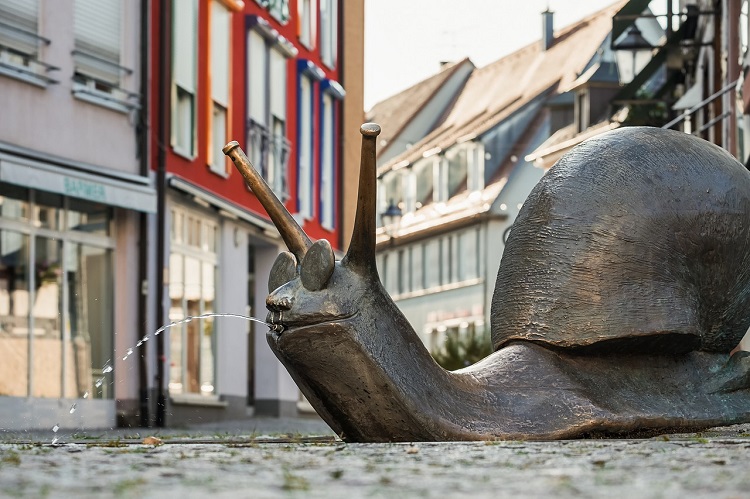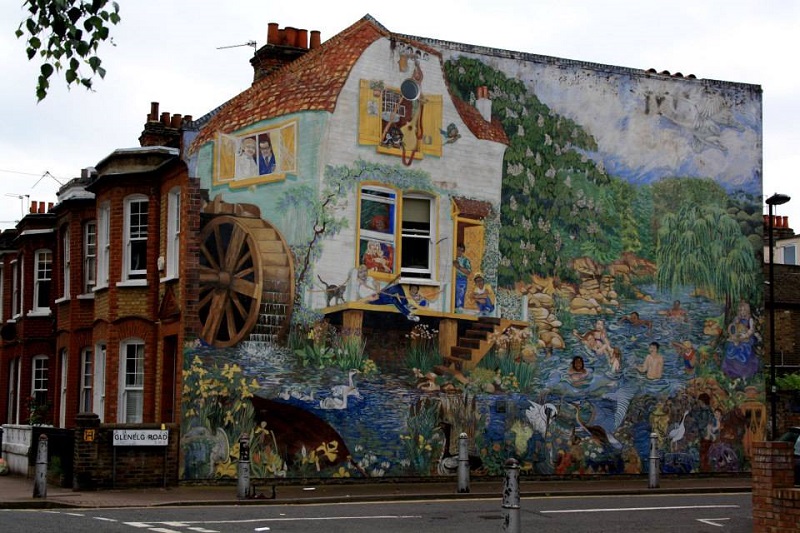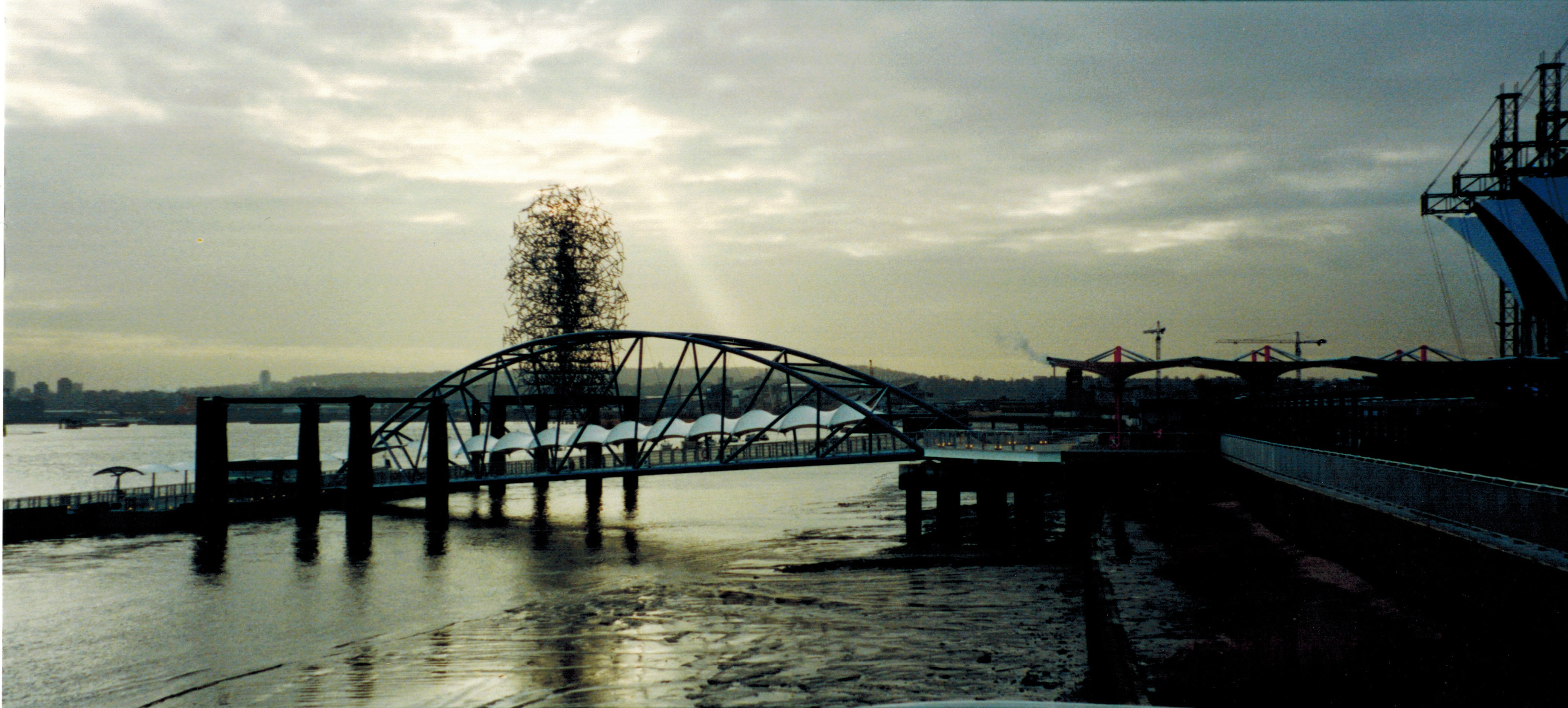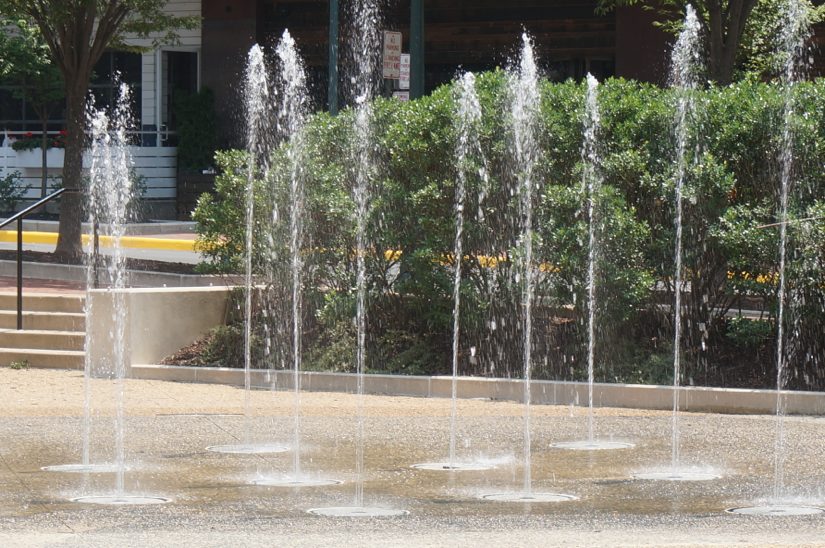Art in the built environment

|
Contents |
[edit] Introduction
Although the built environment can encompass both internal and external spaces, the term art in the built environment tends to be used for instances of art that are installed externally to enhance public spaces. These spaces may include town centres, squares, shopping precincts, streets, riversides, parkland and indeed anywhere the public are free to use and experience space.
Art is often commissioned by developers, local authorities or other land owners, or may be procured by arts organisations, often with funding from organisations such as the Arts Council.
The types of art that may be encountered in the built environment can include:
[edit] Painting
The main instances of painting in the built environment are murals, usually on a large scale, applied to walls, buildings, bridges and so on. An otherwise drab, end-of-terrace brick house, for example, may offer a prime opportunity for a mural due to its size and its conspicuous location.
Paintings and drawings may also be created by street artists who are sometimes seen drawing on the pavement (usually using coloured chalk) as a way of getting money from passers-by.
For more information see: Fresco and Trompe l’oeil murals

|
| House mural, Glenelg Road, Brixton. |
[edit] Mosaics
These are usually seen as large-scale murals although their labour intensive and costly nature tend to limit them to work commissioned by local authorities.
Historically, murals are often associated with Roman architecture, in particular floors.
[edit] Sculpture
This can include free-standing artworks in town centres, shopping malls and parks, but can also include sculptures attached to buildings, such as Barbara Hepworth’s on the John Lewis department store in London. It is probably the oldest form of art in the built environment and was in the past associated as much with the creation of monuments and public education as it was with beauty.
Statues commonly appear in historic urban environments, whilst abstract modern sculpture is a feature of many new developments and public spaces, often to the bemusement of passers-by.

|
| Anthony Gormley's Quantum Cloud on the Greenwich Peninsula. |
[edit] Landscaping
Streets, squares and other public thoroughfares can be designed to achieve an artistic effect that is both aesthetic and functional. Landscaping schemes may sometimes be associated with pedestrianisation that can include multi-coloured block paving, planting, seating, as well as other elements of public art. The aim is often to enhance user experience of public space but equally to entice shoppers into an area.
[edit] Fountains
The fountain is one of the oldest tools for enhancing public space, whether that is to provide a source of drinking water or for adornment. Fountains remain an important and much-used element, particularly in warm climates.

|
[edit] Graffiti
The origins of the term graffiti stem from scratches or markings, often inscriptions or figure drawings found on ancient sepulchres or ruins such as for example the Catacombs of Rome or at Pompeii. Graffiti tags or signatures are simpler often unsightly forms of graffiti, though from the late 1970s through to today more artistic graffiti pieces (or graffiti artists), can also be found. Graffiti is usually done without permission as an act of rebellion or public statement with some pieces being recognised and celebrated more formally. Today graffiti art is often associated in a genre of what might be termed street art.
[edit] Street Art
Street art, much like graffiti art is often produced in a public space without formal permission, though street art make take a variety of forms beyong spray cans and stencil images. For example, with the use of tiles, chalk drawings on paving, vinyl stickers, and three dimensional interventions.
[edit] Architecture
Architecture is not generally thought of as art, as its primary function is generally to satisfy the physical and spatial needs of a client rather than having purely artistic drivers.
Some styles of architecture are associated with artistic movements, such as the arts and craft movement, art deco, art modern, art nouveau and so on.
Trompe l’oeil is a technique that creates the illusion of reality. It is French for ‘fool the eye’ or ‘deceive the eye’. It has long been used by artists for paintings and murals, but can also be found in architecture where walls, ceilings, domes and other surfaces are painted with designs that ‘trick’ the observer into seeing other features such as windows, columns, stonework, ornaments and so on.
For more information see: Trompe l’oeil.
Architecture might also include elements of art such as; stained glass windows, frescos, bas-relief, friezes, gargoyles, and so on.
[edit] Related articles on Designing Buildings Wiki
- Art Deco.
- Art Moderne.
- Art Nouveau.
- Arts and craft movement.
- Bauhaus.
- Beaux Arts style.
- Coal holes, pavement lights, kerbs and utilities and wood-block paving.
- Conservation, climbing and graffiti.
- Floorscape in art and design.
- Julian Opie Art Wall CitizenM Tower of London Hotel
- Trompe l'oeil murals.
- Nuclear Dawn mural, Brixton.
- Placemaking.
- Trompe l’oeil.
Featured articles and news
RTPI leader to become new CIOB Chief Executive Officer
Dr Victoria Hills MRTPI, FICE to take over after Caroline Gumble’s departure.
Social and affordable housing, a long term plan for delivery
The “Delivering a Decade of Renewal for Social and Affordable Housing” strategy sets out future path.
A change to adoptive architecture
Effects of global weather warming on architectural detailing, material choice and human interaction.
The proposed publicly owned and backed subsidiary of Homes England, to facilitate new homes.
How big is the problem and what can we do to mitigate the effects?
Overheating guidance and tools for building designers
A number of cool guides to help with the heat.
The UK's Modern Industrial Strategy: A 10 year plan
Previous consultation criticism, current key elements and general support with some persisting reservations.
Building Safety Regulator reforms
New roles, new staff and a new fast track service pave the way for a single construction regulator.
Architectural Technologist CPDs and Communications
CIAT CPD… and how you can do it!
Cooling centres and cool spaces
Managing extreme heat in cities by directing the public to places for heat stress relief and water sources.
Winter gardens: A brief history and warm variations
Extending the season with glass in different forms and terms.
Restoring Great Yarmouth's Winter Gardens
Transforming one of the least sustainable constructions imaginable.
Construction Skills Mission Board launch sector drive
Newly formed government and industry collaboration set strategy for recruiting an additional 100,000 construction workers a year.
New Architects Code comes into effect in September 2025
ARB Architects Code of Conduct and Practice available with ongoing consultation regarding guidance.
Welsh Skills Body (Medr) launches ambitious plan
The new skills body brings together funding and regulation of tertiary education and research for the devolved nation.
Paul Gandy FCIOB announced as next CIOB President
Former Tilbury Douglas CEO takes helm.
UK Infrastructure: A 10 Year Strategy. In brief with reactions
With the National Infrastructure and Service Transformation Authority (NISTA).






















